The mouth organ revealed that he had a natural musical ear just like his mother’s, his father’s and most of those unknown Lennon uncles. He soon outgrew his first cheap little instrument, graduating to a chromatic model—with a sliding bar for changing key—and buying a teach-yourself manual, The Right Way to Play Chromatic Harmonica by Captain James Reilly. With Captain Reilly’s help, he mastered dozens of tunes, from old English airs like ‘Greensleeves’ to film music like the theme from Moulin Rouge . Travelling by Ribble Company bus from Liverpool up to Mater’s in Edinburgh, he sometimes would hardly stop playing for the whole six-hour ride. On one of these journeys, the driver offered to give him a mouth organ that had been left behind by a previous passenger if he would come to the Edinburgh bus depot next day to collect it. John kept the appointment, chaperoned by his cousin Stanley, and duly received a magnificent top-of-the-line chromatic Hohner. ‘I believe it was the same mouth organ he played on his records,’ Stanley says.
He quickly progressed to tinkering on any piano he encountered, at school or in friends’ houses, discovering the same instant facility in his fingers as on his lips. But Mimi, so indulgent in every other way, refused his plea to have his own piano at Mendips. ‘I wouldn’t have it,’ she remembered. ‘ “We’re not going down that road, John,” I told him. “None of that common sing-song stuff in here.”’
In the house overlooking Mendips’ back garden lived Ivan Vaughan, a Dovedale Primary classmate whom John had instantly dubbed Ivy. The two would communicate with whistles or on scraps of paper stuffed into tin cans and swung back and forth by the rope that hung from John’s tree house. A few doors along from Ivan in Vale Road lived Nigel Walley, a cheerful, enthusiastic boy John had met while briefly attending Mosspits Lane school. Nigel, too, became his eager follower, receiving the nickname Walloggs.
The favourite meeting place for local children was a dirt field known as the Tip, in prewar years the site of an artificial lake. It was here that John first encountered a fellow seven-year-old whose rubicund face was topped by a mat of curly hair so sandy pale as to be almost albino. His name was Pete Shotton.
Pete had previously regarded Ivan and Nigel as his gang, and felt some hostility to the kid from Menlove Avenue who seemed to be taking them over. Discovering that John’s middle name was Winston, he began taunting him as ‘Winnie, Winnie, Winnie!’ The resultant scuffle ended with Pete on the ground on his back and John kneeling on his shoulders, pinning down his arms. There he was willing to let matters rest so long as Pete promised never again to call him Winnie. Pete gave his promise and was released—but, once at a safe distance, broke out again with ‘Winnie, Winnie, Winnie!’ John was at first so angry that he couldn’t speak. Then, at the sheer effrontery of it, his face broke into a grin. He had found his first soul mate.
In those days, children roamed freely out of doors for hours on end without their families feeling the least anxiety. And Woolton and its environs offered many inviting places for John and his friends to explore. Across from the Tip was a rugged open space called Foster’s Field, with thickets of blackberry bushes and a pond where they caught tadpoles, newts and frogs and paddled a homemade raft. There were meadows that frothed creamily with cow parsley in summer, and tracts of dense woodland haunted by cuckoos and corncrakes. Calderstones Park and Reynolds Park lay within easy walking distance, as did the grounds of Strawberry Field and of a vanished stately home named Allerton Towers. On the opposite side of Menlove Avenue from Mendips stretched the greens and bunkers of Allerton Golf Course.
Their games were fuelled by make-believe, demanding vigorous activity rather than the modern child’s sedentary trance. The favourite of all was cowboys and Indians, with the participants shooting each other and falling down ‘dead’ with no conception of pain, and Native Americans cast as villains in obedience to Hollywood mythology. But John’s version was different. ‘He always wanted to be the Indian,’ Mimi recalled. ‘That was typical John, to support the underdog. And because he was leader of his little group, the Indians always won.’ Rather than white Western icons like Buffalo Bill or Wild Bill Hickok, his hero was Sioux Chief Sitting Bull. Mimi would stain his face with gravy browning and daub it with lipstick for war paint. From their local butcher’s shop she begged cock-pheasant feathers to make him a chief’s headdress. ‘He loved it,…he never took it off. I can see him in it now, dancing around Pete Shotton, tied to a tree in our garden.’
The centre of Woolton village, socially as well as spiritually, was its Anglican church, St Peter’s, a sandstone edifice with a square Norman-style clock tower. John attended Sunday school in its church hall, as did Pete, Ivy and Walloggs, plus a boy named Rod Davis from King’s Drive and a precociously pretty little girl named Barbara Baker. On leaving home after Sunday lunch, they would each be given a few pennies to put into the collection plate or the cottageshaped money box for Dr Barnardo’s homes. At John’s instigation, they spent the money on chewing gum instead, masticating it showily through their couple of hours’ Bible study.
His pure treble singing voice quickly won him a place in the church choir, to which Nigel Walley also belonged. At first, he seemed to enjoy the ritual of dressing up in a white surplice and turning out for services twice every Sunday as well as Saturday weddings, which meant a half crown (12.5p) payment for each chorister. He was also mysteriously drawn to St Peter’s little churchyard (or the bone orchard, as he called it) where mossy, weather-beaten tombstones traced Woolton families back two centuries and more. He would read and reread the etched inscriptions with their familiar local names, their forgotten tragedies between the lines and their soft euphemisms for death:
Also ELEANOR RIGBY
THE BELOVED WIFE OF THOMAS WOODS
AND GRANDDAUGHTER OF THE ABOVE
DIED 10TH OCTOBER 1939, AGED 44 YEARS
ASLEEP
Mimi would later remember how comforted John seemed by the notion in Eleanor Rigby’s epitaph that ‘it wasn’t gone for ever…just asleep.’
The rector of St Peter’s was a middle-aged Welsh bachelor named Morris Pryce-Jones, known to his younger parishioners as Pricey. Far from the grim stereotype of his race, Pricey was a kindly and tolerant man, prepared for boys to be boys up to a point. But he was utterly unprepared for boys to be anything like John Lennon. One Sunday during a particularly arduous sermon, John’s fellow chorister David Ashton began surreptitiously reading a Boy Scouts’ Pocket Diary , which included the maxim ‘A Boy Scout is Thrifty.’ John produced a pen and altered it to ‘A Boy Scout is Fifty,’ sending everyone around them ‘into tucks’—the Liverpool term for laughter so uncontrollable that it puckers up the entire body as if by some invisible drawstring. Both boys were docked their next wedding payment.
One Sunday school teacher, ‘Ma’ Davies, had an altercation with John during a lesson about Jesus’s encounter with the Scribes and Pharisees. So incensed was he by the story that he announced that Christ’s persecutors ‘must have been Fascists’. Ma Davies told him that Fascists were far worse than Scribes or Pharisees, but John refused to be convinced. The teacher might have given him some credit for such strong emotions on behalf of the Redeemer; instead, she excoriated him for ‘making trouble’ and ordered both him and David Ashton, who had supported him, to report to Pricey for punishment.
Читать дальше
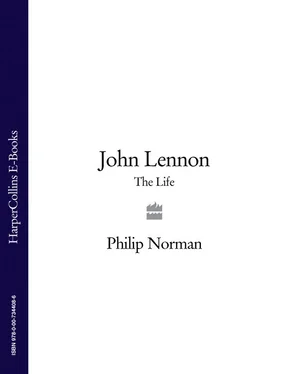
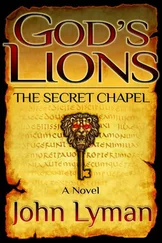
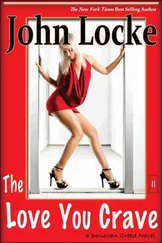
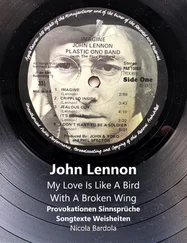
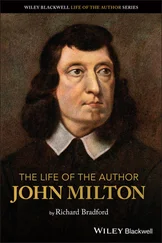
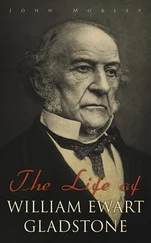

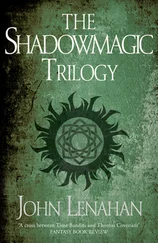
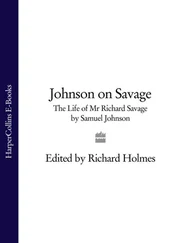
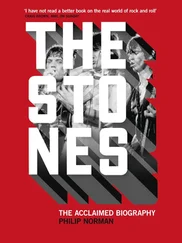


![John Bruce - The Lettsomian Lectures on Diseases and Disorders of the Heart and Arteries in Middle and Advanced Life [1900-1901]](/books/749387/john-bruce-the-lettsomian-lectures-on-diseases-and-disorders-of-the-heart-and-arteries-in-middle-and-advanced-life-1900-1901-thumb.webp)